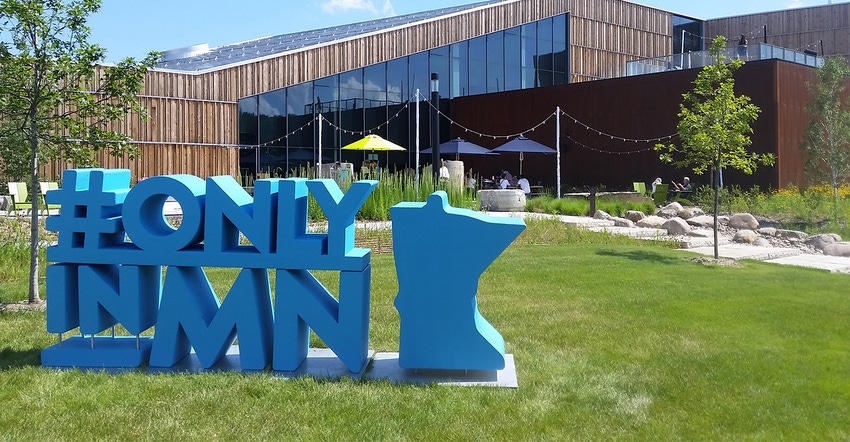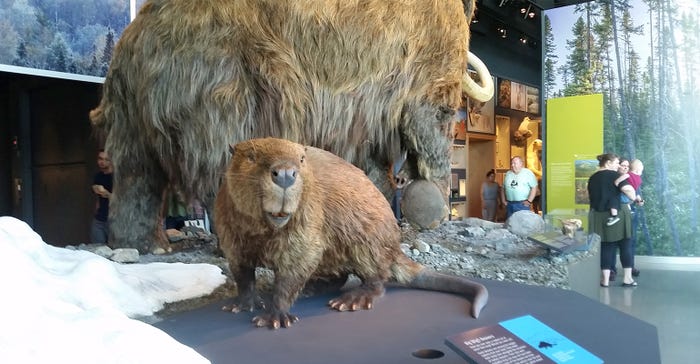August 2, 2018

It all started with forward-thinking lawmakers.
Minnesota was entering its 14th year as a state in 1872, when legislation was passed that founded the state’s natural history museum. The new law provided detailed instructions for the University of Minnesota to conduct geological and natural history surveys, and to collect, label and properly display “all rocks, soils, ores, coals, fossils, cements, building stones, plants, woods, animal skins and skeletons, birds, insects and fishes and any other mineral, vegetable and animal substances and organisms discovered” while conducting the surveys.
The survey results were then to be preserved for public inspection at the U-M in well-lit, well-ventilated rooms.
Since then, the Bell Museum has been housed in four different buildings on the Minneapolis campus before landing at its new digs on Larpenteur Avenue in St. Paul. Along the way, 1.2 million specimens have been collected, documenting the biodiversity of Minnesota and the rest of the world. The site also includes a geology exploration area, with large boulders representing Minnesota’s major rocks types — basalt, limestone, sandstone and gneiss.
The $79.2 million museum, which also houses a new planetarium, had its official grand opening in July. I visited the museum that weekend with my youngest daughter, who recently graduated from college with a biology degree. We were impressed with what it had to offer.

INTERACTIVE DIORAMAS: Not only do visitors have the opportunity to view sandhill cranes in a prairie and savanna biome diorama, they also can “interact” with a sandhill crane captured on video, performing its mating dance.

Permanent galleries include the eye-catching dioramas that were painstakingly disassembled, transported, cleaned and reassembled at their new location. Many schoolchildren have memories of walking through dark hallways in the old Bell to view this fading scientific art form. These were my favorite stops throughout the museum. The detail and realism in each is impressive. Each diorama is based on an actual location in the state, such as moose at Gunflint Lake near Grand Marais, Minn., snow geese at Mud Lake near Wheaton, Minn., and wood ducks in maple basswood forest near Waseca, Minn. To make these dioramas come to life, interactive touch-screen kiosks have been installed that tell you more about what you are looking at and where it was found.

VIEWING EVOLUTION: An interactive touch screen and map in the Tree of Life on Earth Gallery show how biological specimens evolve throughout time.

Interactive evolution of species
My daughter Katherine was especially enamored with the Tree of Life on Earth Gallery. Here you learned how species evolved over time, sometimes adapting to the environment and sometimes dying out, sometimes converging and sometimes mutating and evolving, showing genetic changes over time.
Again, an interactive kiosk was the high-tech highlight. It features an interactive touch screen at the base of a large map that shows the three domains of life — bacteria, archaea and eukaryotes — and the six kingdoms — ancient bacteria, true bacteria, protista, fungi, plant and animal. By touching here and there on the screen, you build something looking like an ancestry map and are able to see how life evolved into forms on Earth today.

BLAINE CONNECTION: The 5-foot-long prehistoric beaver on display in the Bell Museum was based on a giant beaver jawbone found in Blaine, Minn.

Another highlight for me was viewing the wooly mammoth and prehistoric beaver. As museum staff note, it’s been 10,000 years since these behemoths roamed what is now Minnesota. Still, this creature belongs here, taking up residence on the second floor in front of huge windows allowing lit-up viewing at night. An artistic fabrication and design studio in Eagan, Minn., designed the mammoth and its diorama neighbor, a 5-foot-long prehistoric beaver. Hair on the fiberglass mammoth was patiently applied by hand by the artist.
The prehistoric beaver was fabricated based on a unique find: an actual giant beaver jawbone found in Blaine in Anoka County, Minn.
We’re about 10 miles as the crow flies from Blaine, and we have a creek cutting through the north side of our small acreage. To think we had something that size living along the banks of Ford Brook and meandering through our woods way, way back in the day.
That brings Minnesota’s natural history a lot closer to home.
Learn more about the Bell Museum at the museum website.
You May Also Like




